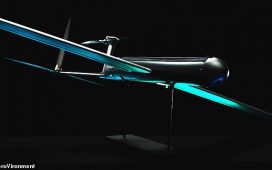AFA NEWS: Autonomous Drone Tech ‘Top Acquisition Priority,’ AFSOC Commander Says

MQ-9 Reaper
Air Force photo
NATIONAL HARBOR, Maryland — Air Force Special Operations Command has been operating with an aging intelligence, surveillance and reconnaissance infrastructure dating back to the 1990s, and updating that is at the top of the command’s acquisition priorities, said its commander.
The Adaptive Airborne Enterprise is an AFSOC modernization initiative focused on developing autonomous drones to improve ISR capabilities. One key component of the concept is the MQ-9 Reaper, an unmanned aerial vehicle, which the initiative plans to transform into a mobile control center, an Air Force release stated.
The MQ-9 will act as a host platform, or “mothership,” commanding and controlling additional small unmanned aerial systems, or UAS, that have emerging kinetic and non-kinetic capabilities and sensors of their own, the release said.
“Adaptive Airborne Enterprise is my top acquisition priority,” Lt. Gen. Tony Bauernfeind, commander of Air Force Special Operations Command, told reporters at the Air and Space Forces Association’s Air, Space and Cyber conference Sept. 12.
The reason why, he said, is ISR infrastructure.
“Specifically, our MQ-9 … has really been the same architecture that we have seen since the 1990s,” he said. Maintaining a single MQ-9 orbit could take more than 150 personnel or airmen, he said. “That doesn’t seem too unmanned to me.”
MQ-9s are “very intensive” on operators, intelligence, communications, security and maintainer personnel, Bauernfeind said.
“And so day in, day out, based upon the manpower that AFSOC has allocated out to this mission, we have a fixed number of MQ-9s that we can provide to the joint force to make sure that we’re putting that unblinking eye on our adversaries. But I will tell you that is far short of the capacity of MQ-9s I have in the fleet — a significant reduction,” he said.
AFSOC not only needs to focus on increasing efficiency of its existing force, but developing an architecture that enables it in “that future fight where it will be a contested environment,” he said.
Specific capabilities Bauernfeind is eyeing include an expansive sensing grid and an effective communications pathway and nodes, he said.
The sensing grid will need to be “an expansive sensing grid that can find those targets that our joint force will need … in great power competition and in a firefight,” he said.
He also wants an “effective communications pathway and nodes for our special operations forces that will be in the deep battlespace, in any conflict.”
“And so, as we move forward into … Adaptive Airborne Enterprise, it’s very important to me that we push and we go faster. In fact, I want to fail forward and I want to fail fast,” he added.
Bauernfeind said AFSOC will be conducting three demonstrations over the next year, the first being focused on how it can use automated software for a single operator to control three MQ-9s.
“And we’re going to wrestle with that,” he said. “This is going to change how we think and the architecture required,” he said.
The command will also be looking at enabling group 5 UAS, or MQ-9s, to be able to air launch multiple group 1 and group 2 small UAS to achieve goals of the newly announced Replicator imitative, he said.
Deputy Secretary of Defense Kathleen Hicks announced the Replicator initiative last month as an effort to build thousands of attritable autonomous systems at scale within the next 18 to 24 months.
Regarding a sensing grid, Bauernfeind said AFSOC will be focused on how to work with joint partners to be able to “pass that network around to where it’s needed, so we’re sensing the targets we need or establishing communications that we have.”
“I think what we will learn as we do this is if we do this architecture right, it will be able to connect to manned systems, unmanned systems, space systems, terrestrial systems — and because we’re going to have to be that nimble in the future fight and not just say, okay, it’s this one answer,” he said.
The process will be unnatural, he said.
“Because we’ve had this architecture for multiple decades, how are we going to trust ourselves that that automation is working, and we don’t have to have a good … young American sitting there staring at the sensor feed 24/7, 365, that we’ve got the automation and the [artificial intelligence and machine learning] that will put … assets in the right place?”
He said they will have to “test very hard and push ourselves hard, because I think our adversaries are … going in the same direction, so we got to beat them to it.”
Topics: Air Force News









